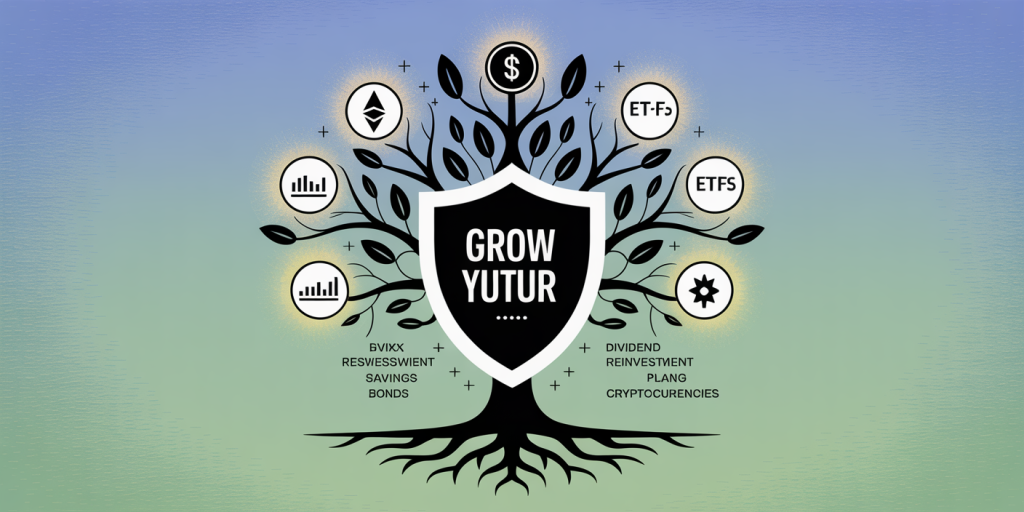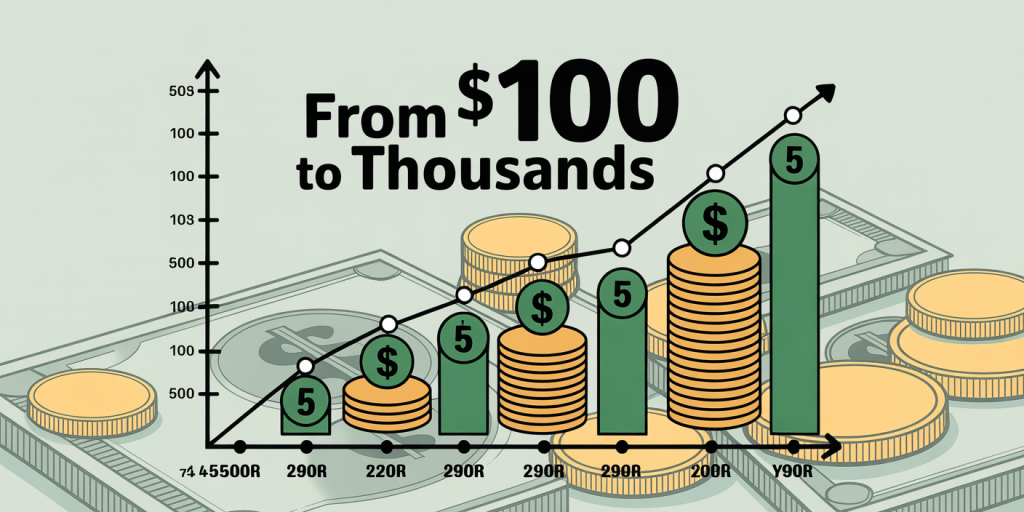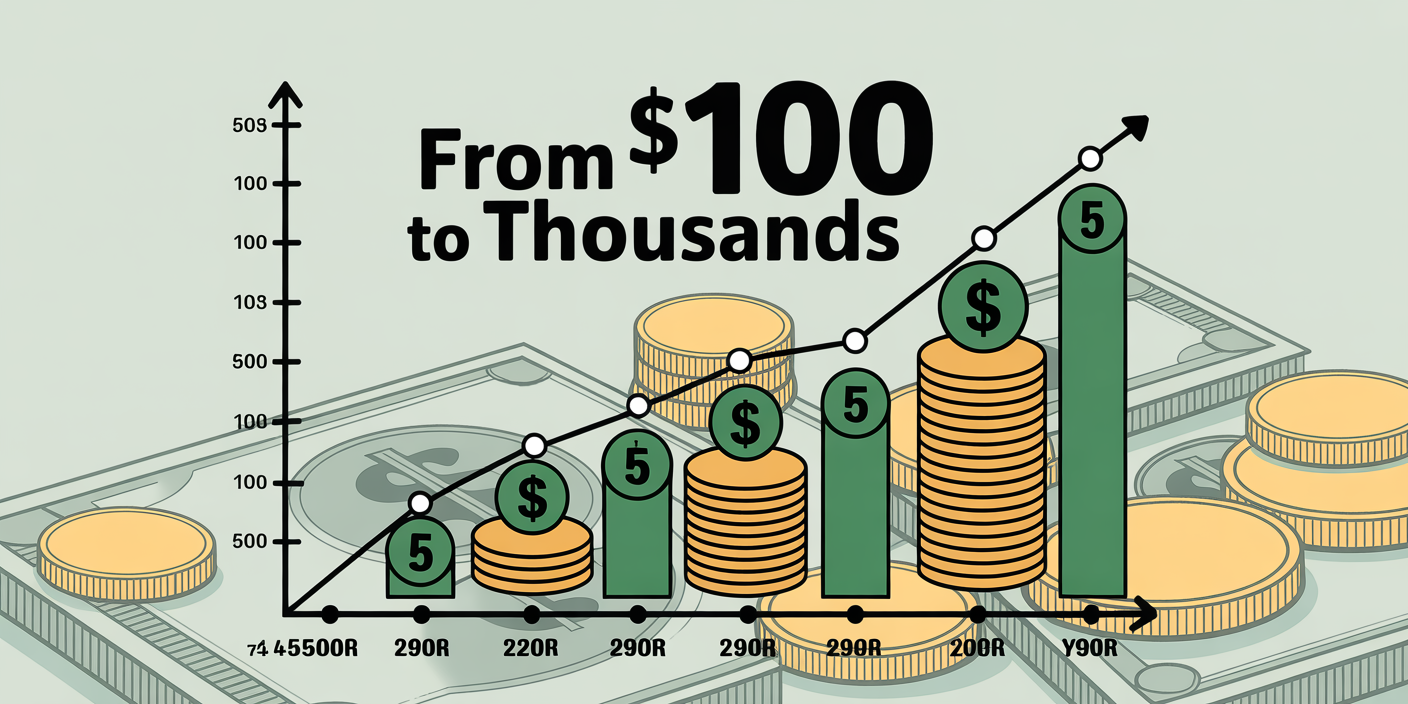Investing is often perceived as a venture exclusive to the wealthy or those with substantial capital, but this myth is rapidly fading. Thanks to technological advancements, lower fees, and innovative investment platforms, you can begin your investment journey with a modest amount—sometimes as little as $100. This article will guide you through practical ways to start investing with $100, demonstrating how even small amounts can grow significantly over time.
The key to successful investing doesn’t always lie in the size of your initial investment but in consistency, knowledge, and making informed choices. To empower beginners and those cautious about dipping into the market, we will explore strategies, real-world cases, and data-backed insights demonstrating how $100 can be the seed for future financial growth.
Why $100 Is a Perfect Starting Point for New Investors
Starting with $100 presents several advantages, especially for novices. Firstly, it lowers the barriers to entry and allows individuals to familiarize themselves with financial markets without risking substantial capital. Many micro-investment platforms have surged in popularity, with some offering fractional shares, automatic reinvestments, and low transaction fees. This democratization means that $100 can effectively purchase fractions of high-value stocks or participate in diversified funds.
Consider Acorns, a micro-investing app founded in 2014—its user database grew to 9 million by 2022, largely by appealing to those starting with small amounts. A user who invests $100 initially and continues saving small sums can, over time, build both confidence and wealth. The psychological benefit of starting small and seeing tangible results often motivates sustained investments.
Secondly, $100 allows room for diversification, especially with access to ETFs (Exchange Traded Funds) or index funds. While $100 may not buy many individual stocks, investing in ETFs can spread your risk across multiple companies, sectors, or asset classes—a crucial step to protecting your capital and seeking steady growth.
Choosing the Right Investment Platforms for $100
Selecting the appropriate investment platform is critical when your initial capital is $100. Many traditional brokers impose minimum deposits or charge fees that make small investments impractical. Luckily, the rise of fractional shares and commission-free platforms changed the game.
Platforms like Robinhood, Webull, and Fidelity offer commission-free trading and allow fractional share purchases, making $100 a practical amount to start. For instance, with $100 on Robinhood, you could buy 0.1 shares of Amazon (AMZN), which trades at over $3,000 per share, enabling participation in high-value stocks without requiring thousands of dollars.
Moreover, robo-advisors like Betterment or Wealthfront require low minimums and form diversified portfolios based on your risk tolerance and goals. Robo-advisors automate portfolio rebalancing and reinvest dividends, freeing investors from constant decision-making and potentially increasing returns over the long-term.
Here is a comparative table of useful platforms for $100 investments:
| Platform | Minimum Deposit | Commission Fees | Fractional Shares | Robo-Advisor Features | Mobile App |
|---|---|---|---|---|---|
| Robinhood | $0 | $0 | Yes | No | Yes |
| Fidelity | $0 | $0 | Yes | Yes | Yes |
| Betterment | $0 | 0.25% AUM | Yes | Yes | Yes |
| Acorns | $5 | $1 – $3/month | Yes | Yes | Yes |
| Webull | $0 | $0 | Yes | Limited | Yes |
This table shows not only that $100 is enough to start but that investors can choose platforms tailored to their needs, whether direct trading or managed portfolios.
Investment Options Suitable for $100 Budgets
Once you choose the platform, selecting investment vehicles comes next. For $100, it’s best to avoid individual stocks unless fractional shares are available. Instead, consider the following options:
1. Exchange-Traded Funds (ETFs) ETFs are funds that track indexes, sectors, or themes, allowing you to buy a basket of stocks or bonds at once. For example, the SPDR S&P 500 ETF (SPY) tracks the S&P 500 and currently costs about $400 per share; however, fractional shares allow you to invest your $100 directly. According to data from Morningstar, over the past 10 years, the S&P 500 has averaged an annualized return of roughly 10%, showcasing the growth potential of ETFs for small investors.

2. Dividend Reinvestment Plans (DRIPs) Many companies offer DRIPs, enabling investors to purchase stock directly, often with no fees, and automatically reinvest dividends. Small, regular investments compound thanks to the interest on dividends. For instance, Coca-Cola’s DRIP allows investors to start with a minimum of $500 but some companies have lower thresholds, enabling participation with $100 or less through cooperative brokers.
3. Cryptocurrency Digital assets like Bitcoin or Ethereum can be purchased in fractions, allowing investors to buy even $10 worth at a time. Though volatile and risky, they offer diversification and exposure to new asset classes. According to 2023 reports by Statista, retail investors increasingly allocate small portfolio percentages to cryptocurrencies.
4. Savings Bonds or Treasury Securities While returns are generally lower, U.S. Savings Bonds or Treasury bills are low-risk investments accessible online, with minimum purchases as low as $25. They provide portfolio stability and protection against extreme market downturns for first-time investors.

Investing your $100 wisely in these options requires understanding each asset’s risk, return, and liquidity features.
Real-Life Examples of Building Wealth From $100
To better illustrate investing with $100, consider the story of Jane, a graphic designer who started her investment journey in 2018. She began by depositing $100 into a robo-advisor account with Betterment and committed to contributing $50 monthly auto-deposits. Over five years, Jane’s account grew to approximately $4,200, assuming an average annual return of 8%. Her disciplined approach exemplifies how combining initial small investments with consistent additions creates substantial wealth over time.

Another example involves Mike, a university student who preferred a hands-on investing approach. Using Robinhood, he purchased fractional shares of technology stocks and ETFs with his $100 initial investment. His strategy focused on growth stocks like Apple and Microsoft. Despite some volatility, after three years, his portfolio grew approximately 60%, as tech stocks outperformed the market.
Such case studies highlight that starting with $100 is not a limitation but an opportunity to gain market exposure, learn investing principles, and develop habits that encourage wealth-building.
Risks and How to Mitigate Them When Investing $100
With smaller investment amounts, risk management becomes crucial. Although $100 might seem insignificant compared to larger portfolios, the percentage loss impacts smaller amounts proportionally.
One common risk is concentration risk, where all funds are put into a single asset or sector. Diversification through ETFs or robo-advisors mitigates this by spreading risk across multiple holdings. Additionally, using commission-free platforms reduces hidden costs that can quickly erode small investments.
A second risk is market volatility. For example, during the COVID-19 pandemic’s early months in 2020, the S&P 500 dropped about 34%; had you invested your $100 right before the crash, short-term losses would feel discouraging. However, historical data reveals that markets tend to recover over time—only those with a long-term perspective generally benefit.
A practical step to manage volatility is to set clear financial goals and timelines. If investing for retirement 20 years away, short-term fluctuations should have less impact. Ensuring an emergency fund separate from investments also avoids forced liquidation during downturns.
The Future Outlook for Small-Scale Investors
The landscape for small-scale investors continues to improve. According to a 2023 report by Statista, about 35% of U.S. adults aged 18-34 engage in some form of micro-investing. Technological innovation, regulatory support, and growing financial literacy contribute to this trend.
Artificial Intelligence (AI)-powered tools are emerging to tailor investment advice even for tiny portfolios, improving decision quality without high fees. Additionally, expanding access to international markets and thematic ETFs enables small investors to diversify beyond traditional equity markets.
We can anticipate further reduction of barriers, making investing accessible to nearly everyone regardless of income or knowledge level. Engaging early with as little as $100 positions investors to capitalize on compounding growth, technological innovation, and market opportunities ahead.
In summary, starting to invest with $100 is not only possible but can be the foundation for a robust financial future. With proper platform choice, smart asset allocation, ongoing contributions, and risk management, small investors can confidently enter markets and progressively build meaningful wealth.

Deixe um comentário